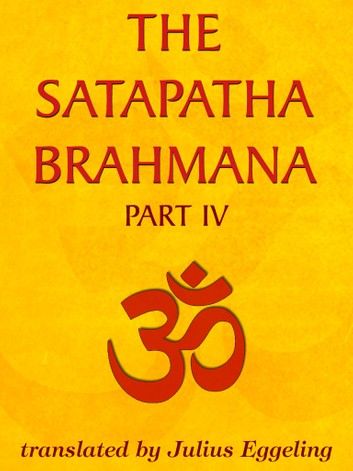| FindBook |
有 1 項符合
The Satapatha Brahmana, Part IV的圖書 |
 |
The Satapatha Brahmana, Part IV 作者:Julius Eggeling 出版社:AppsPublisher 出版日期:2013-01-23 語言:英文 |
| 圖書館借閱 |
| 國家圖書館 | 全國圖書書目資訊網 | 國立公共資訊圖書館 | 電子書服務平台 | MetaCat 跨館整合查詢 |
| 臺北市立圖書館 | 新北市立圖書館 | 基隆市公共圖書館 | 桃園市立圖書館 | 新竹縣公共圖書館 |
| 苗栗縣立圖書館 | 臺中市立圖書館 | 彰化縣公共圖書館 | 南投縣文化局 | 雲林縣公共圖書館 |
| 嘉義縣圖書館 | 臺南市立圖書館 | 高雄市立圖書館 | 屏東縣公共圖書館 | 宜蘭縣公共圖書館 |
| 花蓮縣文化局 | 臺東縣文化處 |
|
|
The Satapatha Brahmana, Part IV
by Julius Eggeling
THE present volume completes the exposition of the Agnikayana, or construction of the sacred Fire-altar. Whilst to the general reader the section of the Brâhmana treating of this ceremony, and extending over no less than five of its fourteen kândas--or rather more than one-third of the whole--will probably appear the least inviting part of the work, a special interest attaches to this ceremony, and the dogmatic explanation of its details, for the student of Indian antiquity. The complicated ritual of the Fire-altar, as has been pointed out before, does not seem to have formed part of the original sacrificial system, but was probably developed independently of it, and incorporated with it at a comparatively recent period. There seems, indeed, some reason to believe that it was elaborated with a definite object in view, viz. that of making the external rites and ceremonies of the sacrificial cult the practical devotional expression of certain dominant speculative theories of the time. As a matter of fact, the dogmatic exposition of no other part of the sacrificial ceremonial reflects so fully and so faithfully as that of the Agnikayana those cosmogonic and theosophic theories which form a characteristic feature of the Brâhmana period. In the present work, that section commences with a cosmogonic account so elaborate as is hardly to be met with anywhere else in the Brâhmana literature; and throughout the course of performance the symbolic import of its details is explained here, as in other Brâhmanas, on the lines of those cosmogonic speculations.
When, towards the close of the period represented by the Vedic hymns, inquiring minds began to look beyond the elemental gods of the traditional belief for some ulterior source of mundane life and existence, the conception of a supreme, primordial being, the creator of the universe, became the favourite topic of speculation. We accordingly find different poets of that age singing of this uncreate being under different names,--they call him Visvakarman, the 'All-worker'; or Hiranyagarbha, the 'golden Embryo'; or Purusha, the 'Person'; or Ka, the 'Who?; or the heavenly Gandharva Visvâvasu, 'All-wealth'; or Pragâpati, the 'Lord of Creatures.' Or they have recourse to a somewhat older figure of the Pantheon, likewise of abstract conception, and call him Brahmanaspati, the Lord of prayer or devotion; a figure which would naturally commend itself to the priestly mind, and which, indeed, in a later phase of Hindu religion, came to supply not only the name of the abstract, impersonal form of the deity, the world-spirit, but also that of the first of its three personal forms, the creator of the Hindu triad. Amongst these and other names by which the supreme deity is thus designated in the philosophic hymns of the Rik and Atharva-veda, the name of Pragâpati, the Lord of Creatures or generation, plays a very important part in the immediately succeeding period of literature, viz. that of the Brâhmanas.
|











